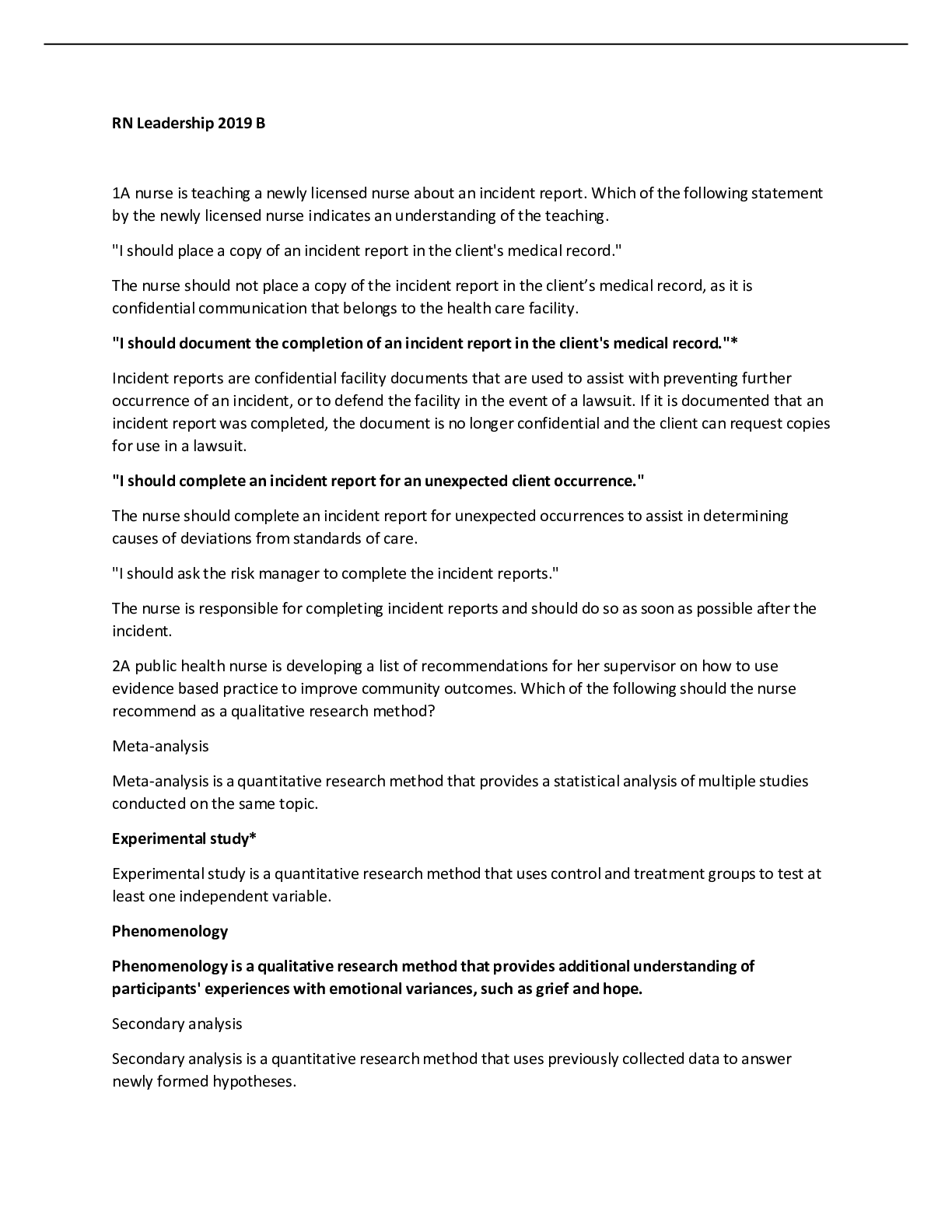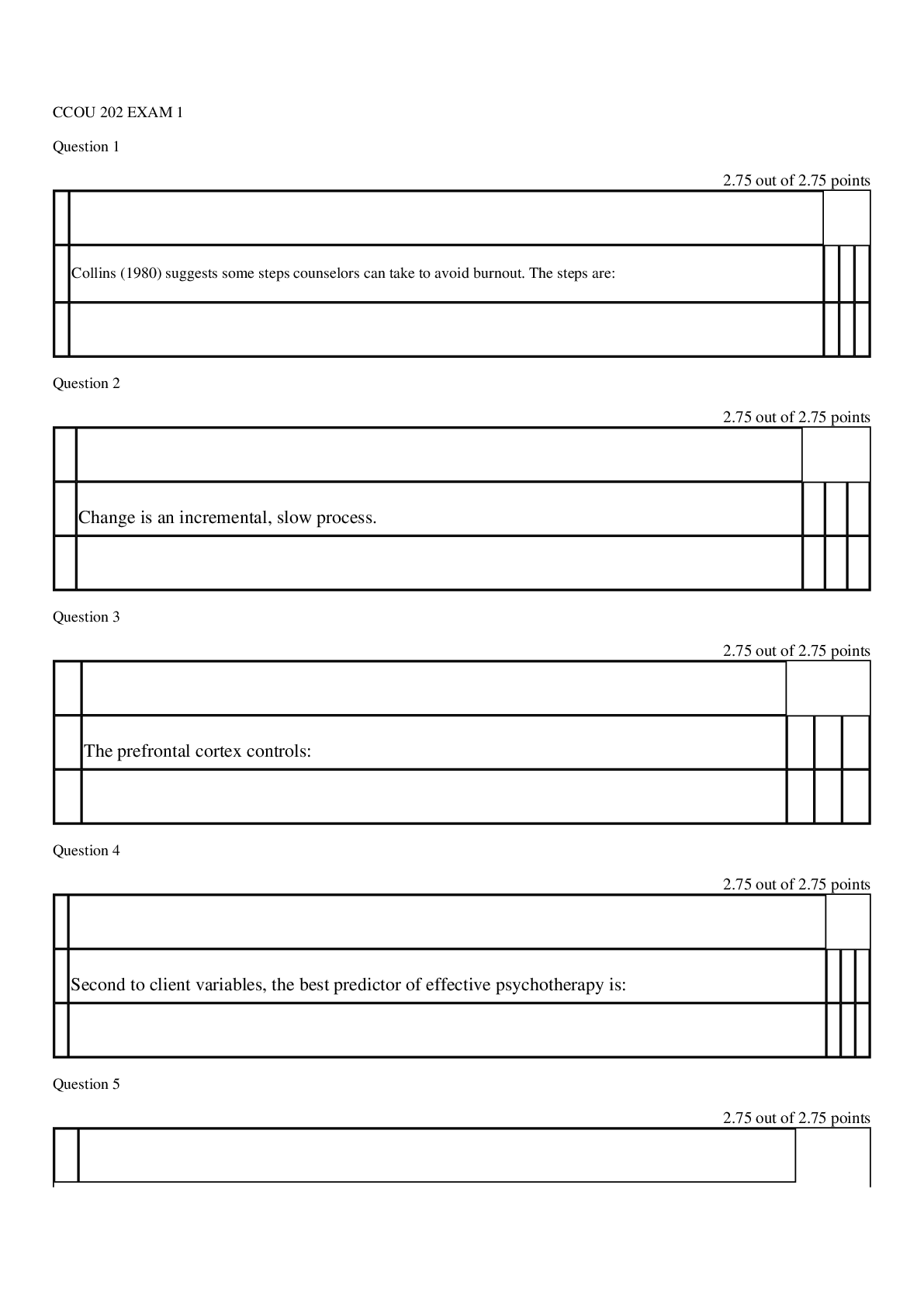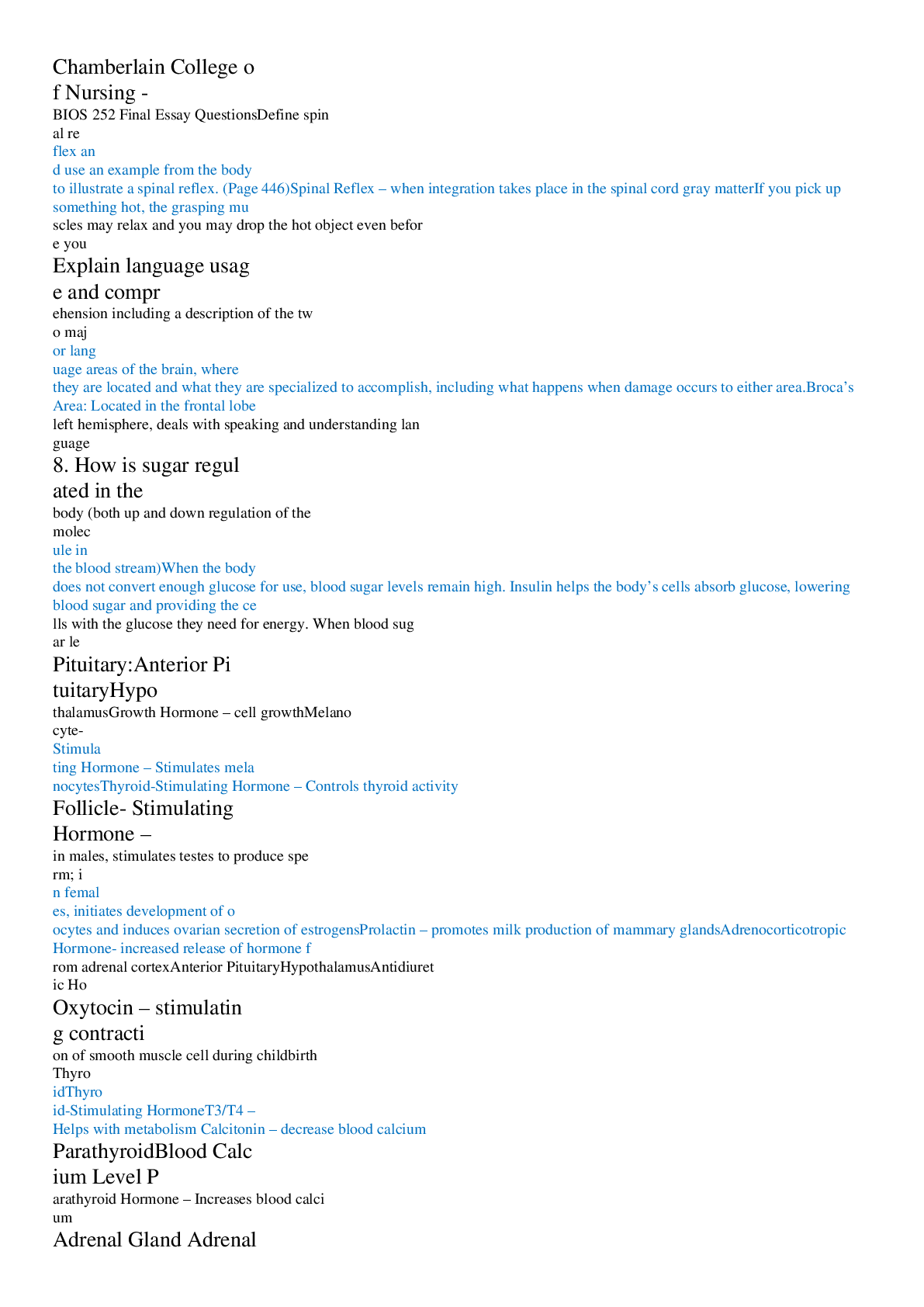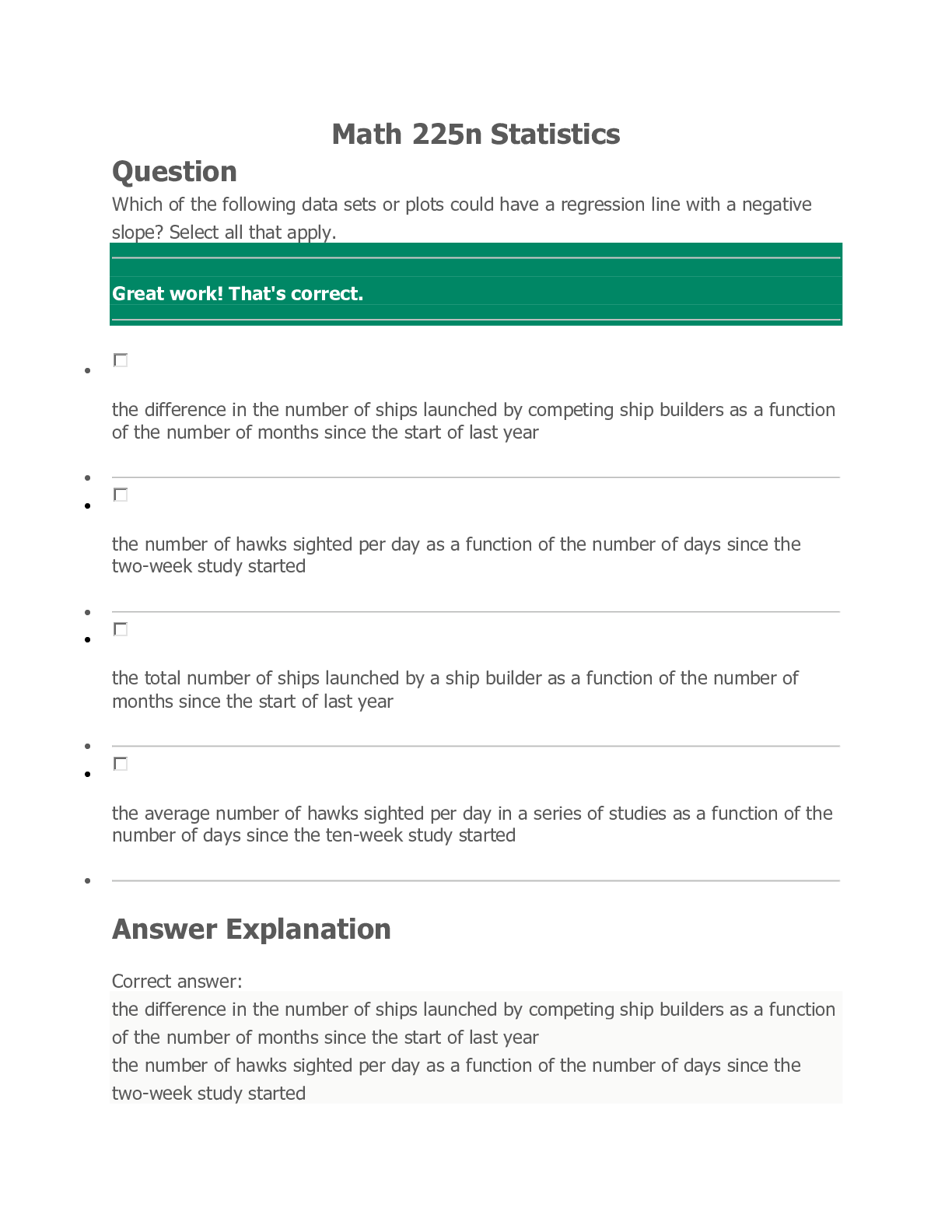Health Care > EXAM REVIEW > MATERNAL AND NEWBORN NURSING (All)
MATERNAL AND NEWBORN NURSING
Document Content and Description Below
MATERNAL AND NEWBORN NURSING CARE OF THE NORMAL NEWBORN The care babies receive and the bond they form with their parents during the first several weeks of life have many effects. These factors ... influence the growth and development of healthy infants and the closeness of the entire family. As a nurse, you play a special role as a teacher and advocate for family caregivers and their newborns. A normal baby is born with the reflexes and body systems needed to live outside the woman’s body. By no means, however, is the baby ready to live on its own. The infant cannot meet its own basic needs without help. In this topic, you will learn to assist neonates (newborns during the first 28 days of life) and teach their new parents how to care for them. You will learn about immediate care for healthy newborns, their physical and behavioral characteristics, and the typical care of the infant from the time of birth until the time of discharge. IMPORTANT CONCEPTS IN NEWBORN CARE At the time of birth, the neonate must quickly make four dramatic changes to adapt to the world outside the shelter of the womb. These changes are temperature regulation, circulation, respiration, and source of nourishment. The neonate must also complete these transitions quickly; the first 24 hours of life are critical for the newborn. In providing initial care, the focus is on monitoring and assessing the newborn’s vital systems and keeping the infant warm. The baby’s well-being depends on having a clear airway and effective respiration. Assessing the respiratory and circulatory systems, checking vital signs, and administering cord care are important skills that you will need to master. Respiration The changes in respiration are the greatest challenge for the newborn. The baby must begin breathing immediately after birth. Before birth, all of the fetus’ oxygen had been provided through the placenta, where gases and nutrients from the maternal blood diffused into the fetal blood. As soon as the cord is clamped, however, the infant’s lungs become the organs of gas exchange. Excess secretions in the airway can block breathing and, if inhaled, can cause aspiration pneumonia. Immediately after delivery of the baby’s head, the birth attendant removes secretions first from the mouth, then the nose with either gloved fingers or with a small, soft-bulb syringe (In Practice: Nursing Procedure 67-1). The change from being enclosed by the muscular walls of the uterus and the bag of amniotic fluid to an air-filled room with light, noises, and stimulation must be quite a shock. The healthy infant responds to the changes in pressure, temperature, gravity, and stimulation by taking the first breath. When the newborn takes the first breath, he or she usually makes the first sounds. Although the fetus had some breathing movements in utero, the lungs were filled with fluid, and no gas exchange occurred across the lung sacs (alveoli). The first breath expands the air passages and the alveoli. The healthy newborn has enough surfactant—a chemical that stabilizes the walls of the alveoli— to allow the sacs to remain open, rather than collapsing after each breath. This means that the next breath will not require as much effort. The first few breaths set into process events that (1) assist with the conversion from fetal to adult type circulation, (2) empty the lungs of liquid, and (3) establish neonatal lung volume and function in the newborn. The baby’s respirations may not stabilize for about 2 hours after birth. During that time, some breaths may sound noisy and wet. However, it is abnormal for the respiratory rate to be greater than 60 breaths per minute at 2 hours of life. If the mother has been medicated, or has had a long-lasting anesthetic, the newborn may not breathe at once and must be stimulated. Nursing Alert By 2 hours of life, the baby’s respiratory rate should be less than 60 breaths per minute. Apgar numbers are significant and might also be related to NCLEX questions. Circulation The circulatory pathway changes abruptly when the umbilical cord is clamped and then cut. At birth, the fetal circulatory structures (the foramen ovale, ductus arteriosus, and ductus venosus) must close to [Show More]
Last updated: 2 years ago
Preview 1 out of 23 pages

Buy this document to get the full access instantly
Instant Download Access after purchase
Buy NowInstant download
We Accept:

Reviews( 0 )
$7.00
Can't find what you want? Try our AI powered Search
Document information
Connected school, study & course
About the document
Uploaded On
Aug 12, 2022
Number of pages
23
Written in
Additional information
This document has been written for:
Uploaded
Aug 12, 2022
Downloads
0
Views
51

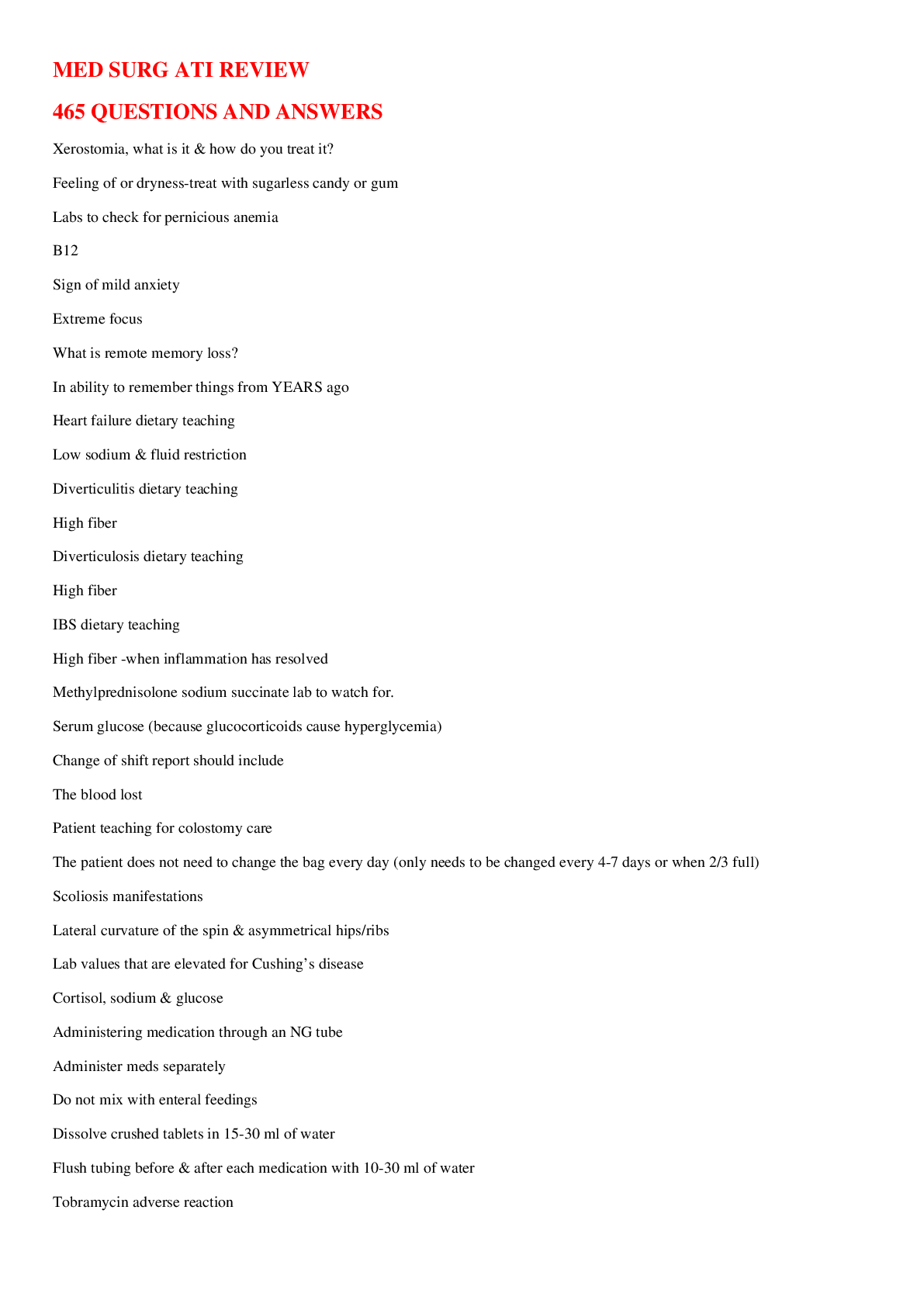

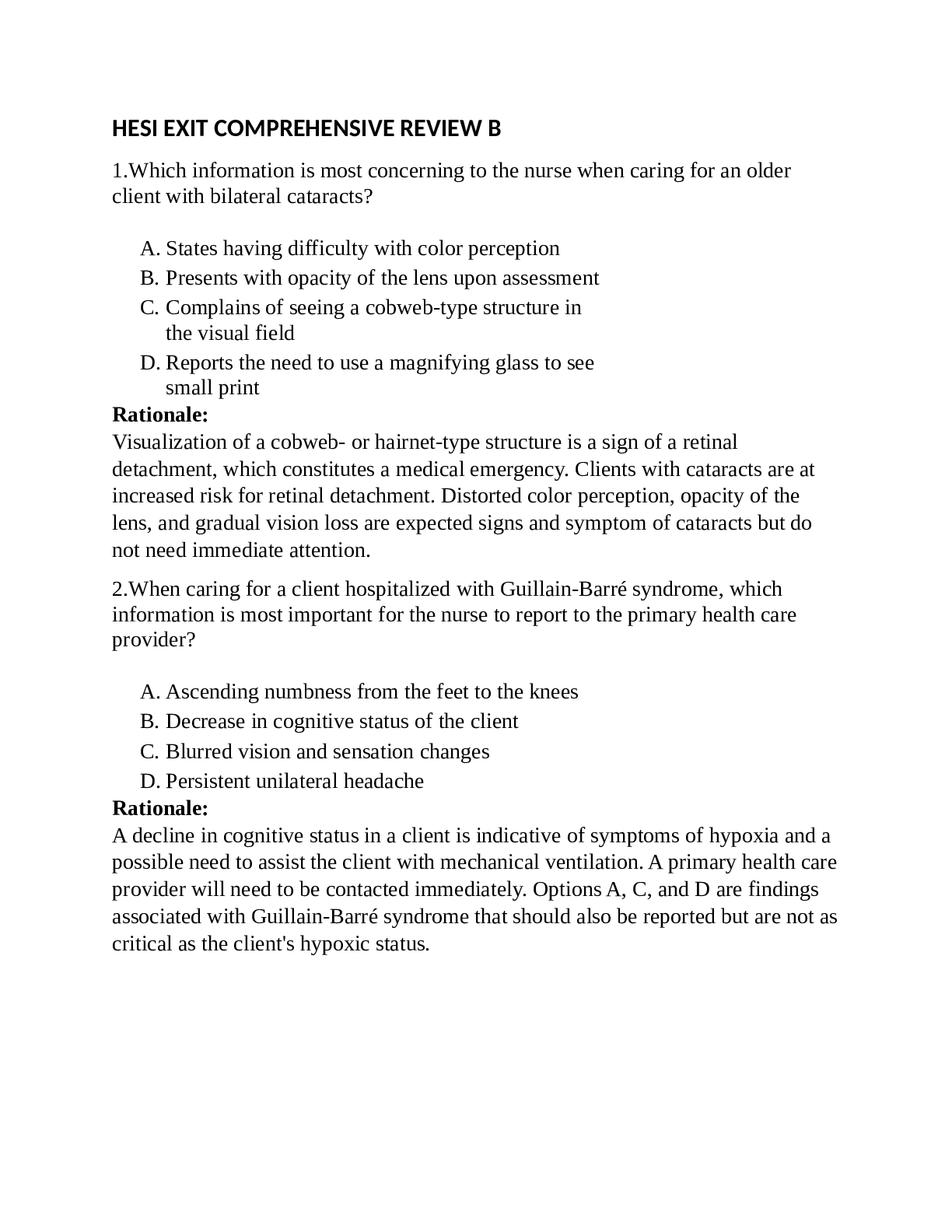

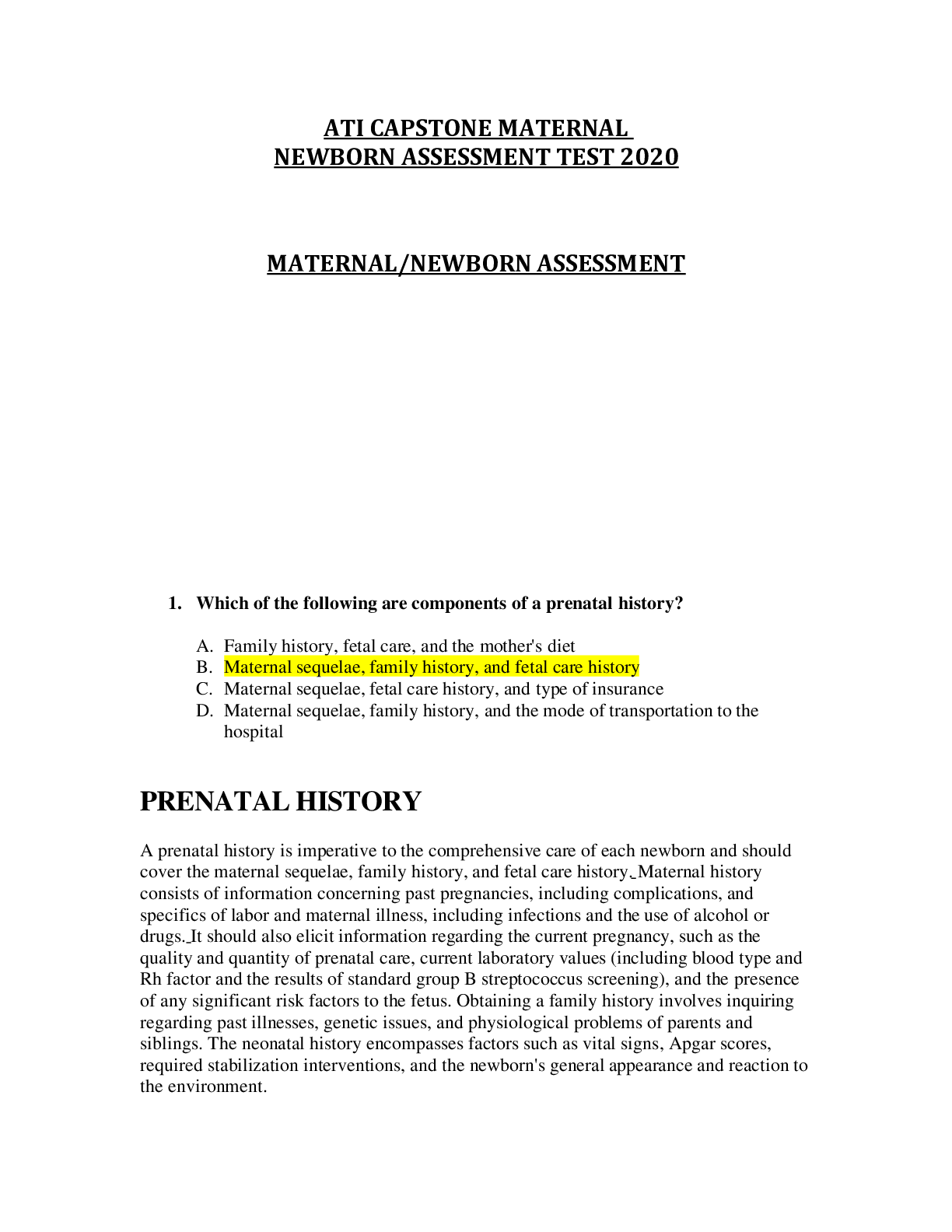
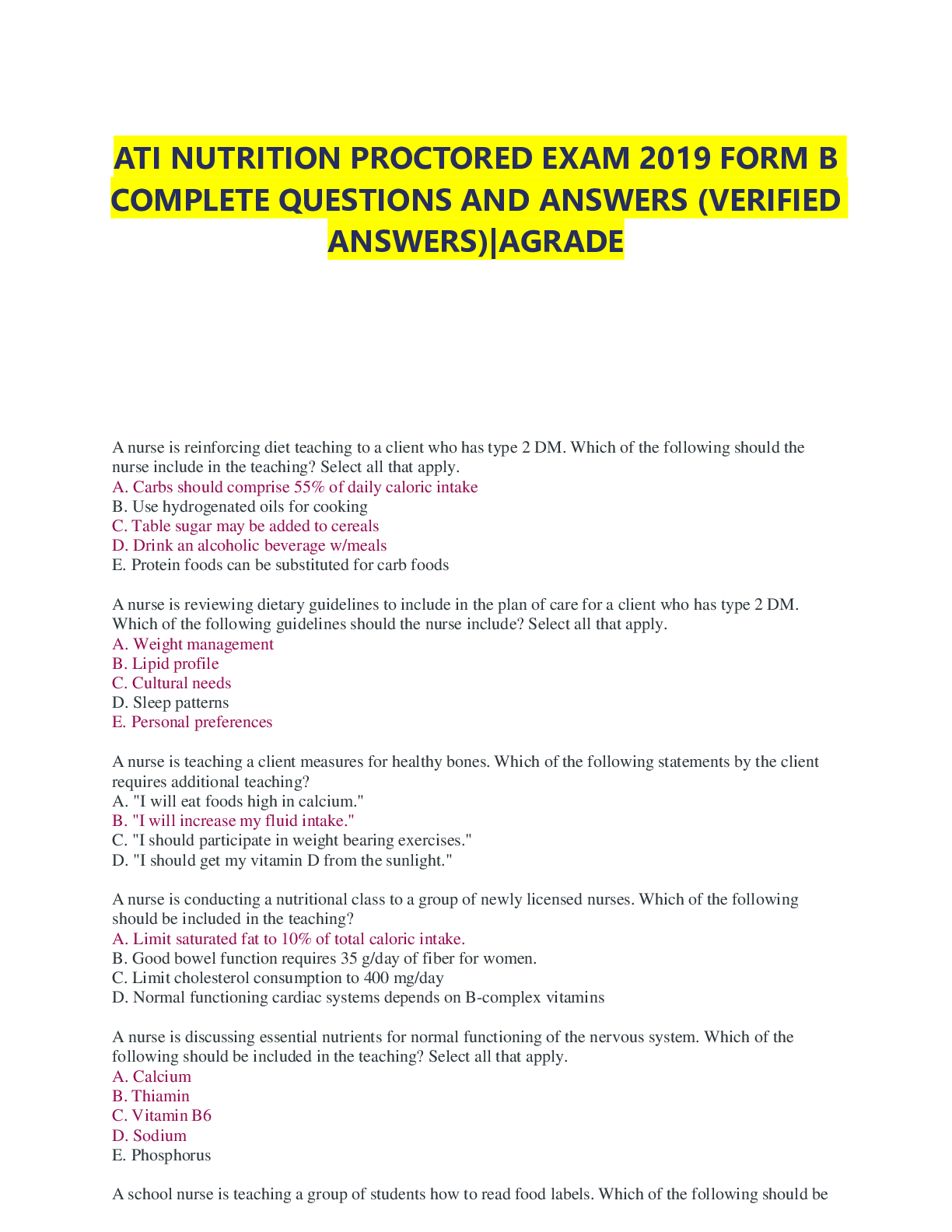

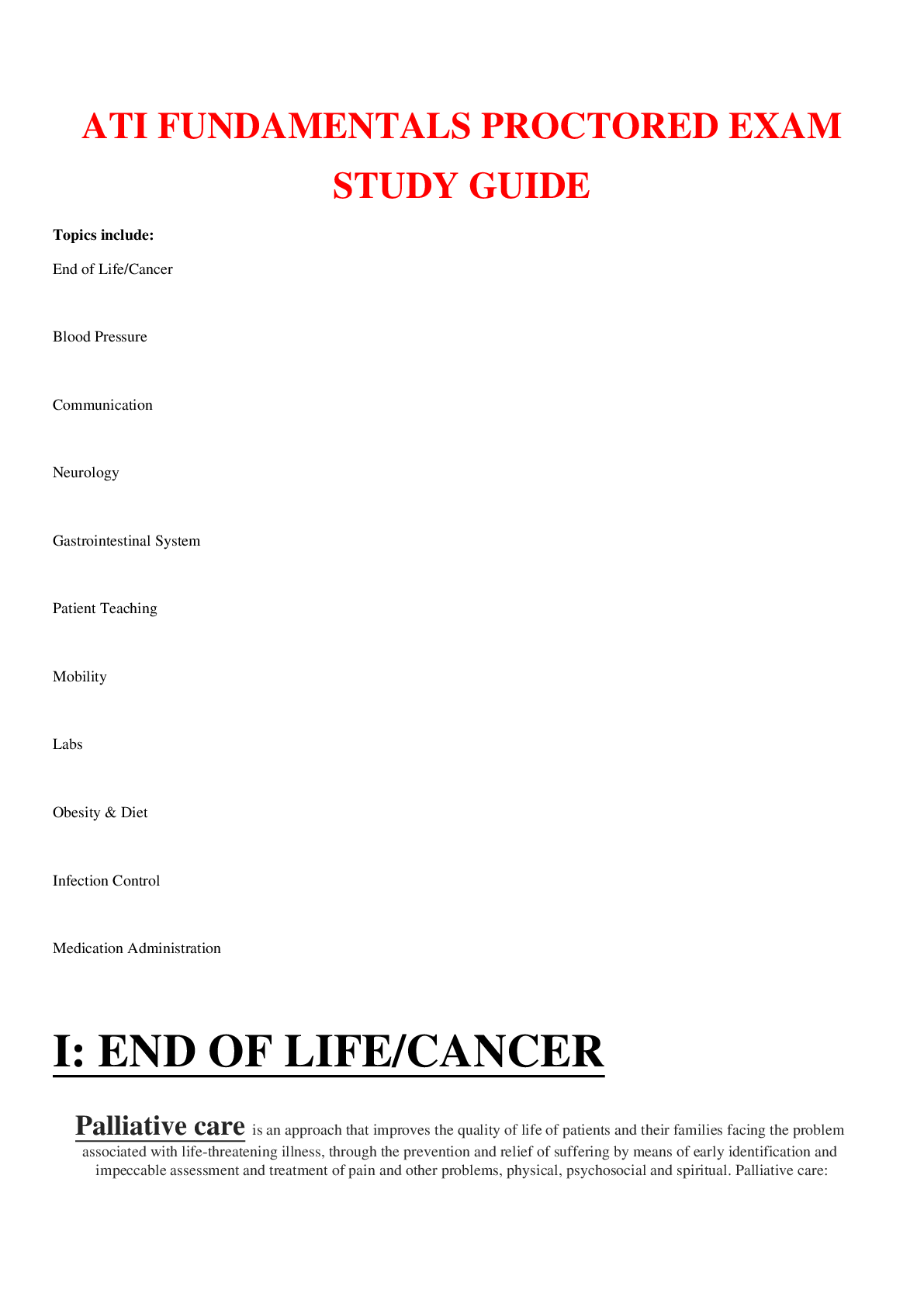
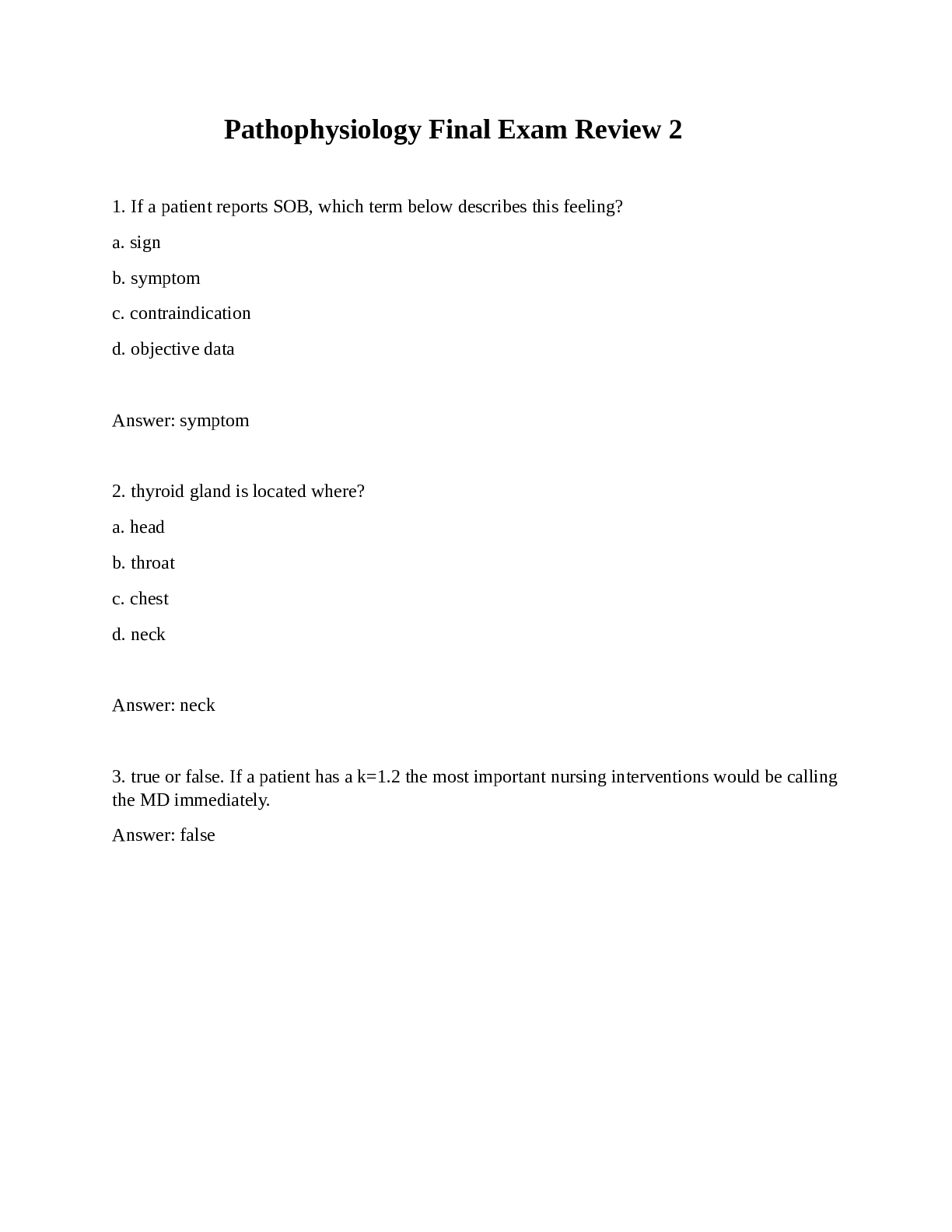
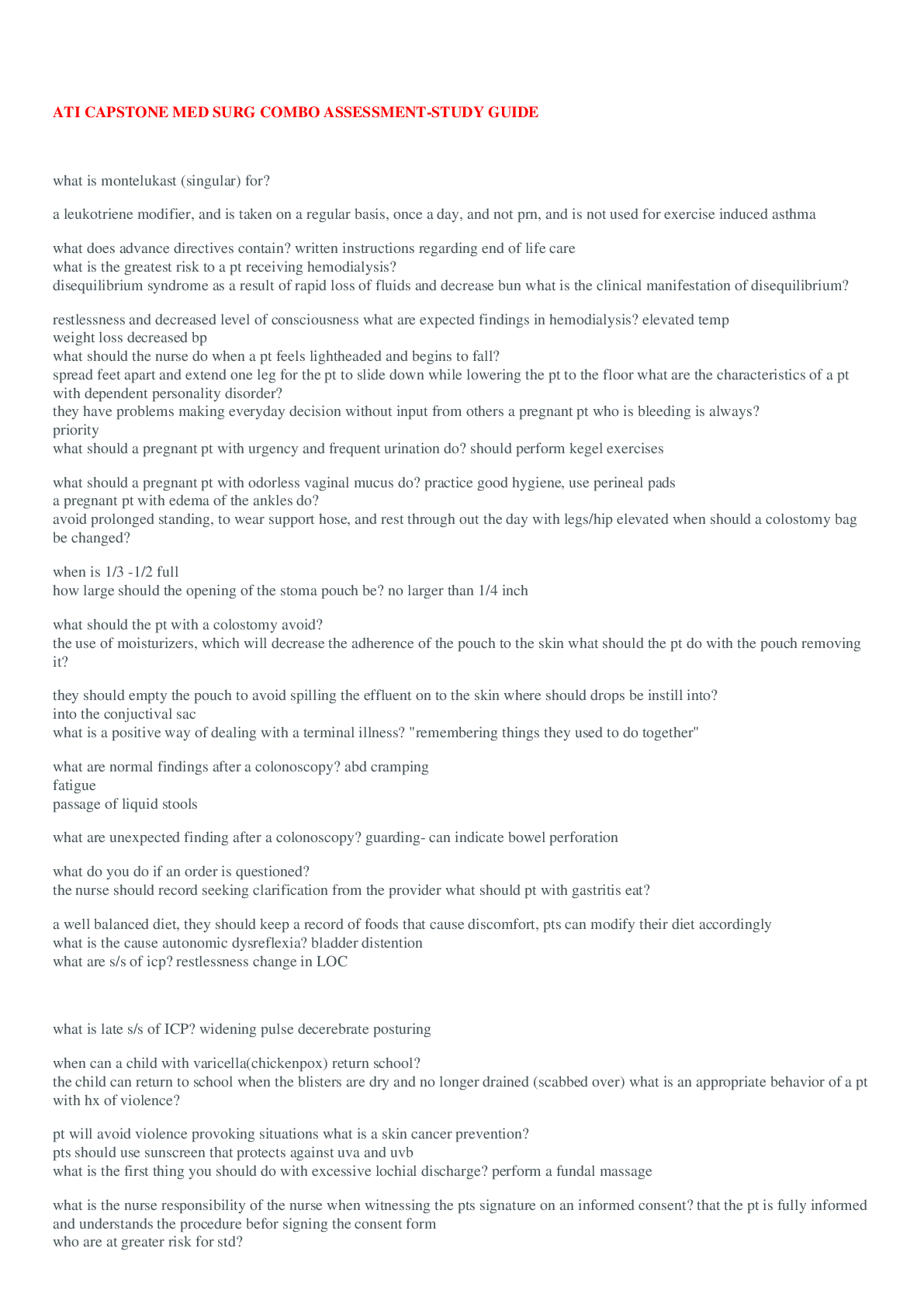
.png)

